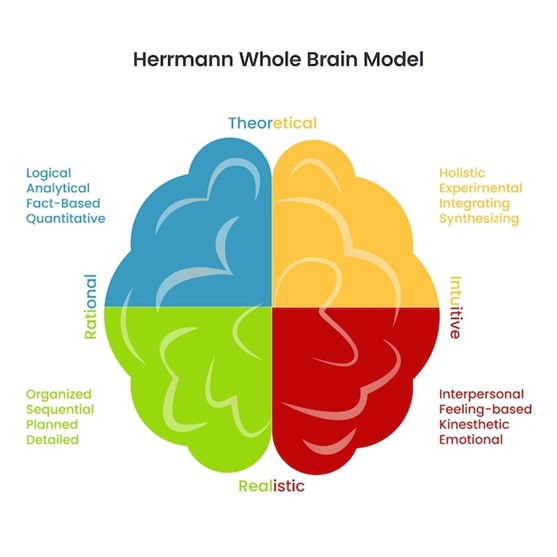Poor leadership can have a significant impact on an organization’s return on investment (ROI). When leaders fail to effectively guide and inspire their teams, it can result in decreased productivity, missed opportunities, and ultimately, diminished financial performance. In today’s competitive business landscape, where maximizing ROI is crucial for success, understanding the connection between poor leadership and low ROI is essential, embracing HBDI Team Assessment is an investment in the future success of both leaders and organizations.
The importance of effective leadership in achieving high ROI
Effective leadership plays a vital role in achieving high ROI. A strong leader sets a clear vision, establishes goals, and motivates their team to perform at their best. They empower their employees, foster collaboration, and create a positive work environment that encourages innovation and productivity. When leaders exhibit these qualities, they can drive their teams towards success, leading to increased ROI for the organization.
Introducing HBDI Team Assessment and its role in improving leadership
HBDI Team Assessment is a powerful tool that can help organizations improve their leadership effectiveness and enhance their ROI. HBDI, which stands for Herrmann Brain Dominance Instrument, is a scientifically validated assessment that measures individuals’ thinking preferences. By understanding how individuals process information and make decisions, organizations can gain valuable insights into their teams’ strengths and areas for improvement.
The science behind HBDI Team Assessment
HBDI Team Assessment is grounded in neuroscience and cognitive research. It identifies four thinking styles, represented by four quadrants: analytical, practical, relational, and experimental. Each individual has a unique combination of preferences across these quadrants, which influences their communication style, problem-solving approach, and decision-making process. By assessing these preferences, HBDI Team Assessment provides a comprehensive understanding of individuals’ thinking patterns.
How HBDI Team Assessment can identify areas of improvement in leadership
HBDI Team Assessment can identify areas of improvement in leadership by analyzing the thinking preferences of individuals within a team. For example, if a leader predominantly exhibits analytical thinking preferences, they may excel in strategic planning and data analysis but may struggle with empathetic communication. By recognizing these preferences, leaders can become more aware of their strengths and weaknesses, allowing them to make conscious efforts to develop their skills and adapt their leadership style accordingly.
The benefits of implementing HBDI Team Assessment in ROI management training
Implementing HBDI Team Assessment in ROI management training can yield several benefits for organizations. Firstly, it provides leaders with a deep understanding of their thinking preferences, enabling them to leverage their strengths and address their weaknesses. This self-awareness can enhance their decision-making abilities, foster effective communication, and improve their overall leadership effectiveness. Additionally, by incorporating HBDI Team Assessment into ROI management training, organizations can create a culture of continuous improvement, encouraging leaders to constantly refine their leadership skills.
Real-life examples of organizations that have successfully used HBDI Team Assessment: Coca Cola, Cirque du Soleil
Coca Cola and Cirque du Soleil are two prominent examples of organizations that have successfully utilized HBDI Team Assessment to enhance their leadership effectiveness and improve their ROI. Coca Cola implemented HBDI Team Assessment as part of their leadership development program, enabling their leaders to gain insights into their thinking preferences and develop strategies to enhance their decision-making and communication skills. Similarly, Cirque du Soleil utilized HBDI Team Assessment to build high-performing teams, ensuring that each team member’s thinking preferences complemented one another, resulting in improved collaboration and innovation.
Failure of Kodak Film: Not applying HBDI
The failure of Kodak Film serves as a cautionary tale of the consequences of not applying tools like HBDI Team Assessment to improve leadership. Kodak, once a dominant player in the photography industry, failed to adapt to the digital revolution. Their leaders were unable to embrace change, think innovatively, and make strategic decisions to stay ahead of the competition. If Kodak had incorporated HBDI Team Assessment into their leadership development, they may have been able to identify the gaps in their thinking preferences and take the necessary actions to transform their business model.
Steps to implement HBDI Team Assessment in your organization
Implementing HBDI Team Assessment in your organization involves several key steps. First, it is crucial to identify the objectives and desired outcomes of utilizing HBDI Team Assessment. Next, select a reputable provider that offers comprehensive assessment tools and expertise in leadership development. Once the provider is chosen, conduct assessments for individuals and teams, ensuring that the results are properly analyzed and interpreted. Finally, develop tailored training programs that address the identified areas of improvement and incorporate HBDI Team Assessment into ongoing leadership development initiatives.
Choosing the right provider for HBDI Team Assessment
Selecting the right provider for HBDI Team Assessment is essential to ensure accurate results and effective implementation. When choosing a provider, consider their expertise in leadership development, their track record of success, and the comprehensiveness of their assessment tools. Look for providers who offer customized solutions that align with your organization’s specific needs and goals. Additionally, seek recommendations and read reviews from other organizations that have utilized their services to gauge their level of satisfaction.
Conclusion: Investing in HBDI Team Assessment for improved leadership and ROI
In today’s competitive business landscape, effective leadership is crucial for achieving high ROI. Poor leadership can have detrimental effects on an organization’s financial performance. By implementing HBDI Team Assessment, organizations can gain valuable insights into their leaders’ thinking preferences, identify areas for improvement, and enhance their overall leadership effectiveness. Through self-awareness and targeted development, leaders can refine their decision-making abilities and communication skills, leading to improved ROI. Embracing HBDI Team Assessment is an investment in the future success of both leaders and organizations.
To unlock the full potential of your leaders and drive higher ROI, consider incorporating HBDI Team Assessment into your organization’s leadership development initiatives. Contact us today to discuss how HBDI can transform your leadership effectiveness and enhance your financial performance. WHS and Training Compliance Solutions providing HBDI Team Assessment to all organisations accross Australia.












